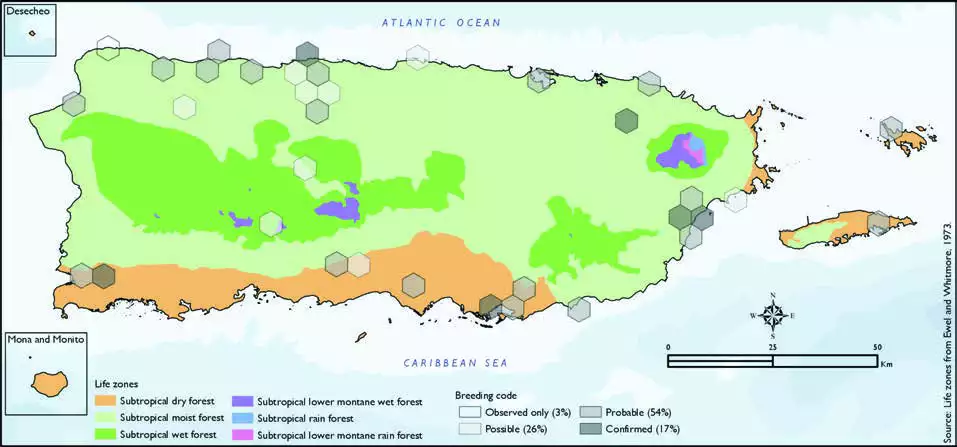Ruddy Duck
Description
The ruddy duck (Oxyura jamaicensis) is a duck from North America and one of the stiff-tailed ducks. The genus name is derived from Ancient Greek oxus, "sharp", and oura, "tail", and jamaicensis is "from Jamaica".
Distribution & Habitat
The Ruddy Duck occurs from northern North America down
to Central America and northern
South America (Oberle 2018),
and it is a common resident
on New Providence in The
Bahamas and the Greater Antilles
(Raffaele and others 1998). The
resident West Indian subspecies
(O.fij.fijamaicensis) has declined
in The Bahamas, Puerto Rico,
and the Virgin Islands to the
point of being threatened
(Raffaele and others 1998). In
Puerto Rico, it can be seen in the
Humacao Natural Reserve, Caño
Tiburones Natural Reserve, and
the Serrallés Lakes near Ponce
(Oberle 2018). In Vieques, it is a
rare breeding resident in spring,
and it is extremely rare in winter and summer (Gemmill 2015).
Habitat includes open freshwater
bodies such as lakes, lagoons,
and alkaline marshes, as well as
saline wetlands and mangrove
edges adjacent to water (Bond
1961, Raffaele and others 1998).
The atlas fieldwork yielded a
total of 77 records within 35
hexagons or 7 percent of the 479
total hexagons (see map). Of the
35 hexagons where this species
was found, breeding met the
atlas definition of confirmed in
17 percent (6) of the hexagons,
probable in 54 percent (19), and
possible in 26 percent (9), while
the species was observed in 3
percent (1) of the hexagons but
without evidence of breeding
(see map). Ruddy Duck distribution. The map shows the highest breeding code by hexagon and overlaying the ecological life zones in
Puerto Rico. Note: percentages may not total 100 due to rounding. 35Ruddy Duck/Pato Chorizo

Breeding Habits
Previously published reports indicate that the Ruddy Duck
breeds primarily from June to
August (Raffaele and others
1998), although breeding seasons
in the southwest may not be
synchronized with breeding
seasons in the northeast part
of Puerto Rico (H. Raffaele,
personal communication 2019).
The nest is built over water in
swamp vegetation (Raffaele
and others 1998). Atlas results
suggest that this species breeds throughout the year with the
most breeding activity from
March to June and a peak during
May and June (see chart). Results
show that this species mostly
breeds in the lowlands within the
subtropical moist forest life zone
(68 percent of the hexagons)
(see table and chart). However,
results indicate that it also breeds
within the subtropical dry forest
life zone (29 percent of the
hexagons) (see table and map).
Conservation
The current population trend for the Ruddy Duck is described
as decreasing (Wetlands
International 2012). However,
this species is currently listed
as a species of least concern by
the IUCN (BirdLife International
2016). In Puerto Rico, the Ruddy
Duck is classified as vulnerable
(PRDNER 2016) and has a
protected habitat in land of 16
percent or 127 km2 of the total area covered by the hexagons
where evidence of breeding was
found for this species (813 km2).
Related Species
Family:
duck